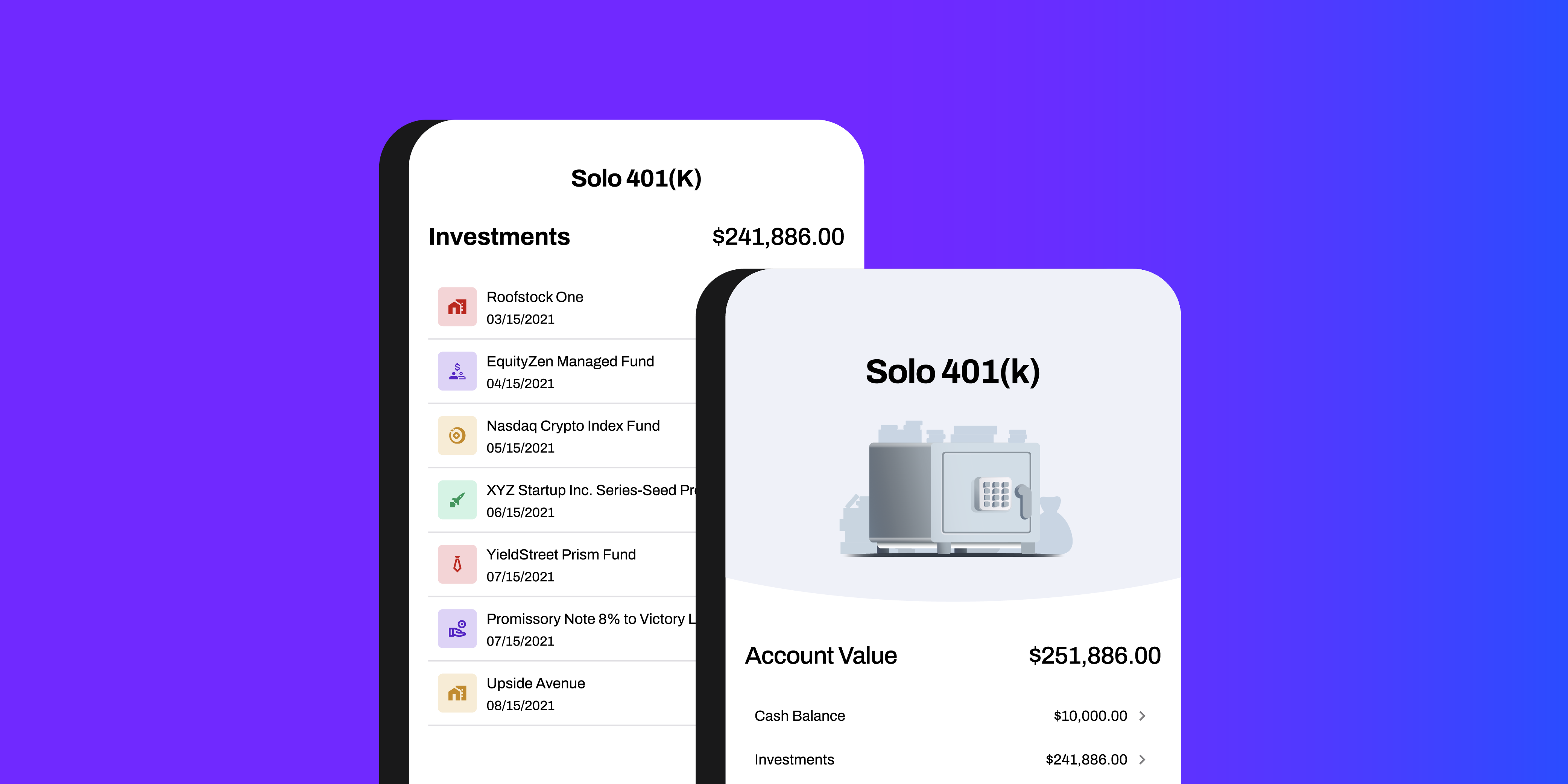6 Features to Look for In a Solo 401(k) Provider
Entrepreneurs and solo practitioners can still use 401(k) plans to save for retirement, even though they are self-employed. How? Because of the Solo...

Your retirement savings options look different when some or all of your income comes from self-employment. While most of your traditionally employed peers have access to an employer-sponsored 401(k) plan, no one is looking out for your future and reminding you to save for retirement. That is all on you.
The Solo 401(k) overseen by the Internal Revenue Service (IRS) is the top choice for retirement savings among self-employed individuals with no employees. Also referred to as one-participant k, uni-k, or individual 401(k), the self-directed Solo 401(k) allows people with self-employment income to enjoy the same tax benefits and savings opportunities as people with a traditional 401(k) account.
You could be eligible to open an account if you receive self-employment income from any of these sources:
Do any of these describe your situation? Keep reading to help you decide if a Solo 401(k) is right for you.
The Solo 401(k) retirement savings account is for a self employed individual who earns at least some of their income from self-employment. They also do not have any regular employees except for their spouse.
The IRS does allow one caveat here. You can hire a temporary or part-time worker if that person does not work more than 1,000 hours per year.
Although you need to earn self-employment income to meet the eligibility requirements of a Solo 401(k), it does not need to be your main source of income.
You can work a side gig while working full-time or part-time for an employer, be fully self-employed, or somewhere in between, and still qualify to sign up for this type of retirement account.
Tax savings and high contribution limits are the two major benefits you enjoy when establishing a Solo 401(k). The IRS immediately defers taxes you would have owed on your self-employment income when you choose to deposit it into your retirement plan instead of spending it right away.
Any investment gains you earn with your Solo 401(k) are tax-free while the money remains in your plan. There is both a Roth and Traditional component to the Solo 401(k), so taxes are dependent upon which type of account you have.
The IRS recognizes sole proprietors as both the employer and employee for purposes of retirement savings. That means you can contribute to your account in both roles. As an employee, you can choose to initiate an elective deferral of up to 100 percent of the proceeds you receive from your business. The IRS refers to this as an earned income deferral.
For the calendar year 2022, the maximum amount of self-employment wages you can defer is $20,500 if you are aged 49 or under. You can include a catch-up amount of $6,500 if you are aged 50 or over, bringing the total maximum earned income deferral to $27,000.
The IRS also allows people with self-employment income to make a non-elective contribution that equals up to 25 percent of their compensation. You can find the details about how the IRS determines self-employment contributions and establishes limits on the official IRS website. After you locate the amount, you need to deduct half of your self-employment taxes along with the total amount of your contribution.
The maximum contribution you can make to your Solo 401(k) in 2022 is $61,000 if you are aged 49 or younger or $67,500 if you are aged 50 or older. You can grow your retirement savings to a considerable sum and set yourself up for a nice retirement if you earn enough money to contribute up to the IRS maximum limits.
The tax-deferred benefit and ability to set aside more than $60,000 is so attractive that most people with self-employed income choose to contribute as an employer and employee. The third contribution option does not offer tax-free earnings on investment gains nor a tax deferral, so on the surface, it would appear to make no sense to choose it. However, you always need to look beyond the surface when determining which retirement option is the best one for you.
The IRS does not subject after-tax and non-deductible contributions to the same employee deferral limits that it does with employee and employer contributions. If your plan allows it, you can contribute after-tax income dollar for dollar to your Solo 401(k) up to the maximum contribution of $61,000 for age 49 and under or $67,500 for age 50 and over.
After making your maximum contributions, you can roll the after-tax funds into a typical Individual Retirement Account (IRA) without needing to meet the criteria of a plan-triggering event. Once the funds have reached your IRA account, you can convert the account to a Roth IRA and not owe taxes on the rollover.
Here is some additional information you should know about Roth contributions to help you decide if you want to pursue this route:
The ultimate responsibility for choosing the best way to contribute to your Solo 401(k) lies with you. You also need to consider that a different retirement plan may work better in your situation. Meeting with a financial advisor is always a good idea, especially if financial terms and IRS paperwork leave you feeling dazed and confused.
The IRS requires those who contribute to an individual 401(k) plan to file the IRS Form 5500-EZ with their annual tax return if their business holds assets of $250,000 or more. You are exempt from this requirement if your total account assets are less than this amount.
Now is the hard part of deciding if a Solo 401(k) is the right plan for you or not. If you're still unsure, you can get in touch with Rocket Dollar and we can help you figure out what may be the best retirement plan for you.

Entrepreneurs and solo practitioners can still use 401(k) plans to save for retirement, even though they are self-employed. How? Because of the Solo...

A Solo 401(k) is a retirement plan that can be used by the self-employed. If you're self-employed and looking to set up a retirement plan, then a...

Most employees consider their 401(k) account a vital benefit. Employers offer these plans to encourage retention and help their employees save for...